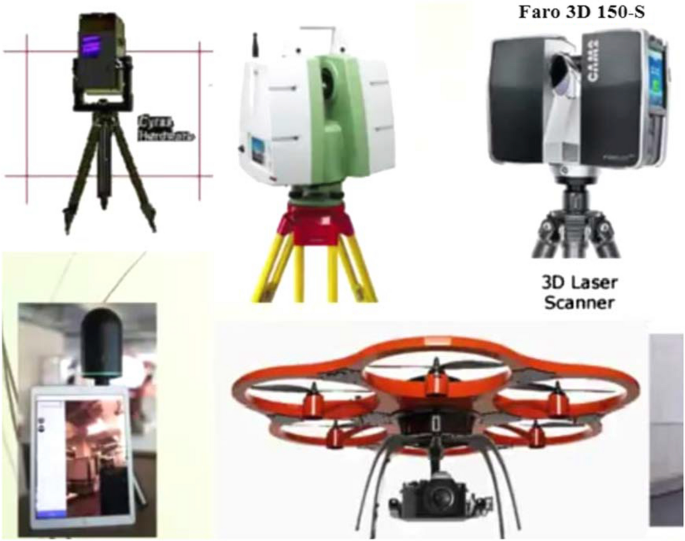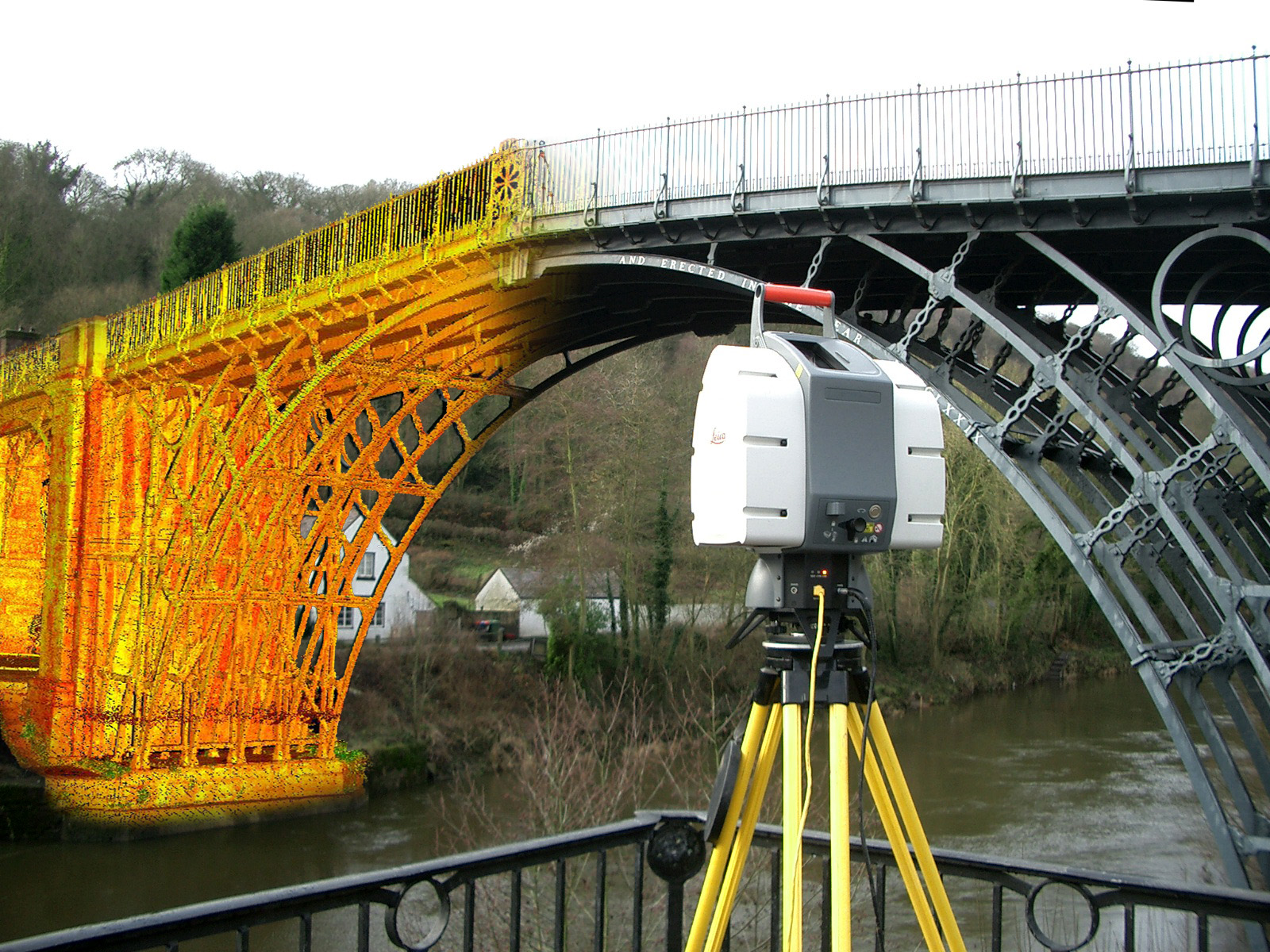Enhancing Manufacturing Processes: The Impact of 3D Laser Scanning on Quality Control
3D laser scanning modern technology is changing quality control in production. By supplying high-resolution information and exact measurements, it enables producers to identify discrepancies from specifications easily. This improvement not only enhances evaluation processes but likewise boosts functional performance. 3D Scanning. The application of this innovation comes with its very own collection of obstacles. Exploring these elements exposes the more comprehensive effects for sectors and the future landscape of production

Understanding 3D Laser Scanning Modern Technology
Although 3D laser scanning modern technology has actually progressed significantly in the last few years, its basic principle continues to be simple: catching the exact geometry of objects making use of laser beam of lights. This modern technology utilizes laser light to gauge distances between the scanner and numerous factors on an item's surface area. The information collected is after that refined to create a detailed 3D design, properly reflecting the dimensions and shapes of the checked things.
Generally, 3D laser scanners can be classified right into 2 main types: get in touch with and non-contact scanners. Call scanners literally touch the item to collect dimensions, whereas non-contact scanners use laser beams to catch data from a distance. The convenience of this technology enables its application across different markets, consisting of design, manufacturing, and construction. Its capability to create high-resolution designs helps with quality assurance, reverse engineering, and rapid prototyping, ultimately enhancing design precision and performance in production processes.
Advantages of 3D Laser Scanning in Manufacturing
As manufacturers look for to enhance effectiveness and precision in their processes, the advantages of 3D laser scanning have become significantly obvious. This ingenious innovation enables very precise and quick dimensions of complex geometries, substantially reducing the time required for quality checks. By recording comprehensive data, makers can recognize discrepancies early in the production procedure, therefore reducing waste and remodel expenses.
Furthermore, 3D laser scanning promotes far better design validation, allowing engineers to compare as-built problems with original specs. This ability assures that any inconsistencies are promptly addressed, improving total item quality. Furthermore, the innovation sustains the production of electronic doubles, which can be made use of for simulations and procedure optimizations. Because of this, producers not only enhance their functional performance but also boost their affordable advantage in the market. Generally, the integration of 3D laser scanning represents a transformative action towards attaining higher criteria in manufacturing quality assurance.
Integration of 3D Laser Scanning Into Quality Assurance
Integrating 3D laser scanning into quality assurance procedures boosts the precision and performance of evaluations throughout manufacturing. This technology allows suppliers to catch in-depth, high-resolution data of assemblies and components, enabling specific dimensions and contrasts against design specs. By employing 3D laser scanning, companies can recognize inconsistencies from resistances extra effectively, which is vital for keeping item stability.

Real-World Applications and Study
Real-world applications of 3D laser scanning in manufacturing demonstrate its transformative influence throughout different industries. Aerospace companies use this innovation to conduct specific assessments of components, guaranteeing they meet rigorous security criteria. A significant case entailed a leading aircraft supplier that utilized 3D laser scanning to simplify its high quality control processes, significantly reducing assessment times and errors.
In the vehicle industry, suppliers have applied laser scanning to create electronic doubles of their cars, making it possible for real-time adjustments throughout manufacturing. One automotive firm reported a 30% decrease in rework prices after integrating this innovation right into their setting up lines.
In the consumer products sector, companies are utilizing 3D laser scanning for quick prototyping, permitting for quicker iterations and improved product layouts. These applications illustrate exactly how 3D laser scanning not just boosts accuracy however also improves effectiveness and technology throughout numerous production domain names.
Overcoming Challenges in Implementation
Implementing 3D laser scanning in manufacturing presents several challenges that organizations should navigate to fully realize its benefits. One significant hurdle is the initial cost of tools and software program, which can hinder firms from these details embracing this innovation. Furthermore, integrating 3D laser scanning into existing workflows calls for getting rid of resistance to alter among workers, requiring thorough training programs to guarantee proficiency. Information monitoring likewise presents a difficulty, as the high volume of information created by 3D scanning have to be properly refined and examined to obtain actionable insights. Furthermore, compatibility problems with tradition systems may prevent seamless assimilation, requiring potential upgrades or alterations. Attending to these obstacles is essential for makers intending to enhance quality assurance and enhance production processes. By creating clear techniques for training, financial investment, and data administration, firms can reduce these barriers and release the transformative capacity of 3D laser scanning in their procedures.
Future Fads in 3D Laser Scanning for Manufacturing
As producing remains to evolve, the combination of 3D laser scanning with raised automation is expected to transform production procedures. Boosted data analytics will play a crucial duty in boosting and maximizing workflows high quality control. These patterns highlight the possibility for better efficiency and precision in manufacturing atmospheres.

Increased Automation Assimilation
The integration of automation in production has actually been progressive, the future of 3D laser scanning is poised to accelerate this fad considerably. As producing processes end up being increasingly complicated, the demand for exact, real-time measurements expands. 3D laser scanning innovation provides automated information capture, reducing labor expenses and minimizing human mistake. This integration enables suppliers to streamline high quality control processes, making it possible for rapid detection of deviations in manufacturing. In addition, the positioning of 3D laser scanning with robotics and automated systems assists in seamless operations, boosting overall efficiency. As producers embrace these sophisticated innovations, they can anticipate better precision and performance, placing themselves competitively in a rapidly evolving market. The synergy between automation and 3D laser scanning marks a significant leap forward in manufacturing development.
Improved Data Analytics
The combination of automation has actually led the method for improvements in data analytics within the domain of 3D laser scanning. Producers are increasingly leveraging sophisticated algorithms and artificial intelligence methods to examine substantial datasets created by laser scans. This boosted information analytics capacity permits real-time surveillance of making procedures, making it possible for the recognition of flaws and inconsistencies extra successfully than traditional techniques. Anticipating analytics can foresee potential problems, substantially reducing downtime and improving general performance. The capacity to picture data in 3 measurements provides deeper understandings into manufacturing process, fostering better decision-making. As 3D laser scanning technology continues to develop, the role of information analytics will become progressively critical in driving technology and preserving affordable advantage in production.
Frequently Asked Questions
What Industries Advantage the Many From 3D Laser Scanning?
The industries that profit most from 3D laser scanning consist of production, building, aerospace, automobile, and medical care. These industries use the innovation for precision measurements, quality guarantee, and effective design procedures, considerably enhancing total functional performance.
How Does 3D Laser Scanning Compare to Conventional Dimension Techniques?
3D laser scanning uses greater precision and speed contrasted to standard dimension approaches. It captures link detailed geometries promptly, browse around here minimizing human error and promoting far better evaluation, which inevitably enhances general quality assurance in numerous markets.
What Is the Expense of Applying 3D Laser Scanning Technology?
The expense of implementing 3D laser scanning modern technology varies significantly, generally ranging from $10,000 to $100,000, relying on equipment, software, and training. Organizations has to evaluate these expenses against prospective performance and quality improvements.
Are There Certain Software Needs for 3D Laser Scanning?
Yes, 3D laser scanning needs particular software application, consisting of information processing and modeling applications. Typical choices include CAD software program, point cloud handling devices, and specialized applications that promote the assimilation and analysis of checked data for suitable results.
The length of time Does a Regular 3D Laser Scanning Process Take?
A regular 3D laser scanning process can take anywhere from a couple of mins to numerous hours, depending upon aspects like the size of the things, intricacy of the setting, and called for degree of information for accuracy.
3D laser scanning innovation is changing top quality control in production. 3D laser scanning innovation has actually evolved significantly in current years, its essential principle continues to be simple: catching the accurate geometry of objects using laser beam of lights. Incorporating 3D laser scanning into quality control procedures enhances the precision and efficiency of evaluations throughout manufacturing (3D Scanning). 3D laser scanning innovation provides automated information capture, lowering labor prices and minimizing human error. The cost of executing 3D laser scanning modern technology varies substantially, normally ranging from $10,000 to $100,000, depending on devices, software application, and training